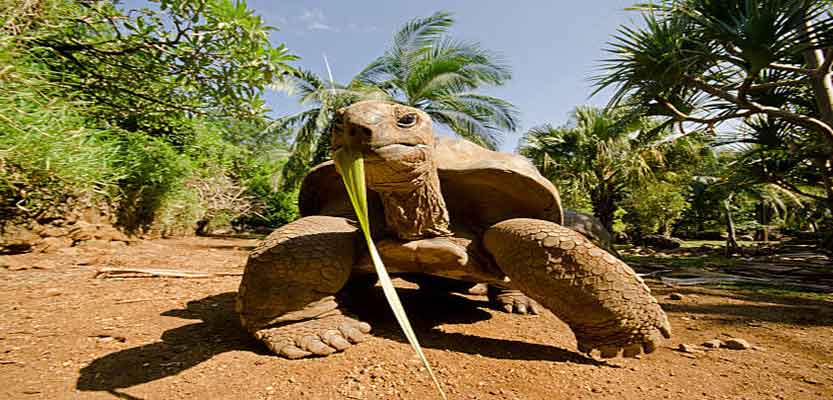
Tortoise keepers all over the world face the same problem: determining which plants are edible and safe for their tortoises. Because these animals are unique, their feeding habits are also distinct from those of other species.
Given that they must spend most of their time in a cage, it is the responsibility of the keeper to provide them with safe weeds and plants.
The weeds and plants listed below are considered non-toxic and safe for consumption.
Aloe Vera
Aloe Vera is regarded as beneficial for tortoises. To make it easier for the turtle to consume, be sure to cut it into smaller pieces.
Antirrhinum – Florets & Leaves
Additionally known as a snapdragon. As the snapdragon is not known to be poisonous, its flowers and leaves are ideal for a varied diet.
Aubretia – Florets & Leaves
Suitable for feeding the turtle in the early spring. They frequently sprout before other weeds.
Bindweed – Florets & Leaves
The plant has large Florets and leaves and is extremely robust. According to a few keepers, it may contain hallucinogens.
Bramble – Leaves Only
Only feed your turtle the leaves of the Bramble plant. Verify that the thorns on the underside of the leaves have been removed as well.
Cactus, Opuntia (Prickly Pear/Indian Fig)
Similar to Aloe Vera. Tortoises are fond of cactus plants. Ensure, however, that you only utilize varieties that lack spines.
Campanula
On a container placed within the tortoise’s enclosure, you can plant a low-growing, trailing campanula. Allow it to hang low so that your pets can reach it.
Chickweed
Chickweed is edible and typically grows in large quantities. It contains tiny seeds where the white Florets used to be.
The flowers and leaves of a clover (Both White and Red)
Due to their high protein content, clover is an excellent addition to the current diet. Due to the high protein content, you should not feed baby turtles only clover.
Dandelion – Florets & Leaves
It is a staple for many, and many keepers adore it. It has large, easily distinguishable leaves.
Dead Nettle – Leaves
Both gardens and the wild contain this plant. It grows in diverse environments, so you do not have to search for it for too long.
Gazania – Florets & Leaves
Not only did they appear attractive when growing in a garden, but these creatures also adore them. Permit them to establish themselves for a constant supply. You could then remove one or two leaves from each plant daily.
Geranium Species (Perrenial) – Leaves & Florets
It is regarded as being quite robust. It will provide Florets and foliage prior to the maturity of bedding plants.
Hebe – Florets and Occasional Leaves
Perfect for planting in outdoor enclosures. They are well-known for shading the animals.
Hibiscus – Florets and Occasional Leaves
These Florets will be an absolute favorite of your tortoise. As they begin to grow, begin removing them one by one and feeding them.
Honeysuckle – Florets
During the early months of summer, its Florets are abundant.
Hosta – Leaves
The leaves are not a preferred component. Nonetheless, a single leaf can be utilized to occasionally alter the diet.
Mallow – Florets & Leaves
Perfect for use in enclosures. The plant is bushy and visually appealing.
Forget-Me-Nots – Florets & Leaves
Suitable for feeding tortoises in the early spring months.
Mulberry – Leaves
A mulberry tree will assist in shading yards. The leaves will provide nourishment for the developing tortoises.
Nasturtium – Florets & Leaves
If allowed to become established, the plants will flourish in growth. Attempting to eradicate the caterpillars, however, will be extremely difficult.
Osteospermum – Florets and Occasional Leaves
Considered ideal food for tortoises that inhabit deserts. It is also beneficial for Sulcata, Russian, and Greek species, as well as those that inhabit marginalized regions.
Pansies – Florets & Leaves
If allowed to flourish during the summer, they serve as an excellent food source during the autumn.
Pelargonium – Flowers & Leaves
It offers excellent color and shade in cascading and upright forms. Both the plant’s leaves and flowers are edible.
Petunia – Flowers & Leaves
One of the most nutrient-dense foods you will consume. As a bedding plant, it will produce leaves and flowers for the duration of summer.
Plantain
Many keepers consider this to be a popular stable. It can be refrigerated for up to seven days and contains a significant amount of fiber.
Rose – Petals Only
As long as rose petals are free of chemicals and pesticides, they are safe for consumption in desserts.
Sow Thistle – Flowers & Leaves
Favorite in numerous desserts. Additionally, the sow thistle provided to the tortoise can be slightly prickly.
Leaves and flowers of Strawberry (Wild and Cultivated)
Young leaves from either cultivated or wild strawberry plants are ideal for making a tort. They can provide a varied diet for the animal.
Vetch
While examining the tortoise feeding table, it is essential to recognize the value of variety. For example, vetch is rich in nutrients. The seeds can be grown outside of the enclosure.
Viola/Violet – Flowers & Leaves
This plant is safe for tortoises to consume and can grow easily during the winter and autumn months.
When it comes to feeding turtles, there is a lot of misinformation and confusion. Each species, such as the Hermann turtle, will have its particular preferences.
Consequently, you must attempt to vary your diet. Try combining hibiscus, vegetables, succulents, and other edible live plants and feeds. The best diet must be well-balanced.
